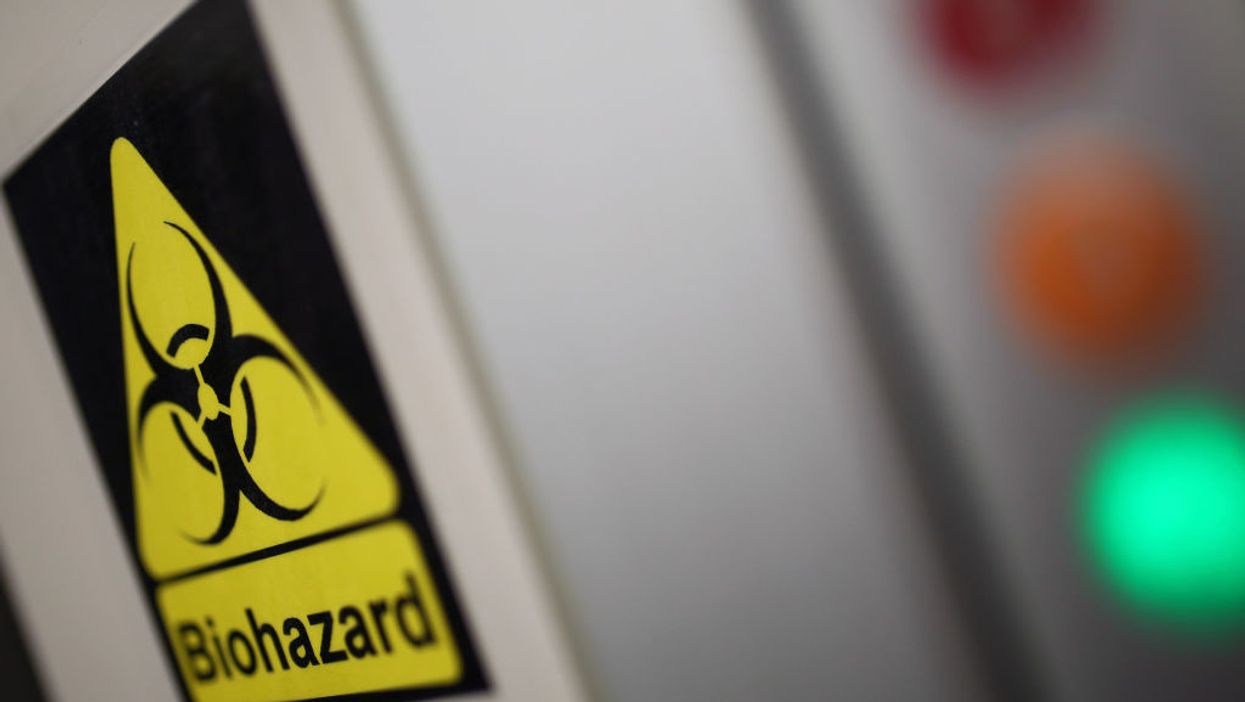
Oliver Bunic/Bloomberg via Getty Images

The evidence continues to pile up
In 2018 — nearly two years before the start of the global coronavirus pandemic — U.S. officials in China sent warnings to Washington expressing safety concerns over a Wuhan facility's research into coronaviruses in horseshoe bats, adding weight to the theory that the novel virus originated in a lab and not at a Wuhan wet market.
The news broke in a report Wednesday by Josh Rogin of the Washington Post, who said that he obtained access to the first of two diplomatic cables sent from State Department officials who had visited the Wuhan Institute of Virology in January and March 2018.
According to Rogin, in January 2018, the U.S. Embassy in Beijing sent American science diplomats to the Wuhan lab, which had in 2017 become the first lab in China to achieve BSL-4 clearance, or the highest level of bioresearch safety. That clearance — granted by a Chinese accrediting agency — allowed researchers at the lab to study the world's most dangerous pathogens.
Evidently, what the U.S. officials discovered during their visits concerned them so much that they proceeded to send two Sensitive But Unclassified cables back to Washington. In the first cable, according to Rogin, the officials warned that inadequate safety measures and risky research could result in a new SARS-like pandemic.
"During interactions with scientists at the WIV laboratory, they noted the new lab has a serious shortage of appropriately trained technicians and investigators to safely operate this high-containment laboratory," states the Jan. 19, 2018 cable.
"Most importantly," the cable states, "the researchers also showed that various SARS-like coronaviruses can interact with ACE2, the human receptor identified for SARS-coronavirus. This finding strongly suggests that SARS-like coronaviruses from bats can be transmitted to humans to cause SARS-like diseases. From a public health perspective, this makes the continued surveillance of SARS-like coronaviruses in bats and study of the animal-human interface critical to future emerging coronavirus outbreak prediction and prevention."
The cable also noted that the U.S. officials met with Shi Zhengli, a virologist known as "bat woman" for her virus-hunting expeditions into bat caves and subsequent research on coronaviruses in bats. In November 2017, just months before the visit from U.S. officials, Shi's team at the Wuhan lab published research showing that horseshoe bats she had collected were likely from the same gene pool as the ones that spawned the 2003 SARS epidemic.
The information represented in the diplomatic cables appear to corroborate other evidence quickly amassing that points to the Wuhan Institute of Virology as the origin point — though that evidence is, at this point, still circumstantial.
In early April, TheBlaze reported on suspicious job postings coming from the Wuhan lab in November and December 2019 that indicate researchers were in fact studying coronaviruses in bats. What's more is that the second of the two postings also seemed to indicate that researchers were seeking additional help to control their confirmed discovery of new viruses.
A Google translation of the Dec. 24 posting said: "Long-term research on the pathogenic biology of bats carrying important viruses has confirmed the origin of bats of major new human and livestock infectious diseases such as SARS and SADS, and a large number of new bat and rodent new viruses have been discovered and identified."
At the time of the posting, China had reported an onslaught of "mystery pneumonia" cases plaguing Wuhan. In the coming weeks, Chinese officials would finally admit that these cases were the result of a new coronavirus infecting its population.
Additionally, the article noted that a research paper published on Feb. 6 by the South China University of Technology suggested that the virus most likely came from an animal known as the intermediate horseshoe bat. Only horseshoe bats are not naturally found within 900 kilometers of Wuhan and the U.S. Centers for Disease Control and Prevention could not confirm the oft-repeated claim that horseshoe bats were sold at wet markets in the city.
The evidence seems to indicate that, in the years prior to the outbreak, Chinese researchers in Wuhan were indeed studying coronaviruses in bats not unlike the SARS-CoV-2 virus that is responsible for the ongoing COVID-19 pandemic.
The cables allegedly sent in early 2018 demonstrate that U.S. officials from the U.S. Embassy in Beijing were not only knowledgeable about the research but concerned about the potential that it could result in a SARS-like pandemic such as the one plaguing the world right now.
Though no official government intelligence has yet confirmed the notion that the virus originated in a Wuhan virology lab, according to Rogin, the theory has standing among many national security officials in the Trump administration. The cables, one senior official allegedly said, add further weight to the theory.
"The idea that it was just a totally natural occurrence is circumstantial. The evidence it leaked from the lab is circumstantial. Right now, the ledger is on the side of it leaking from the lab is packed with bullet points but there's almost nothing on the other side," the official reportedly said.